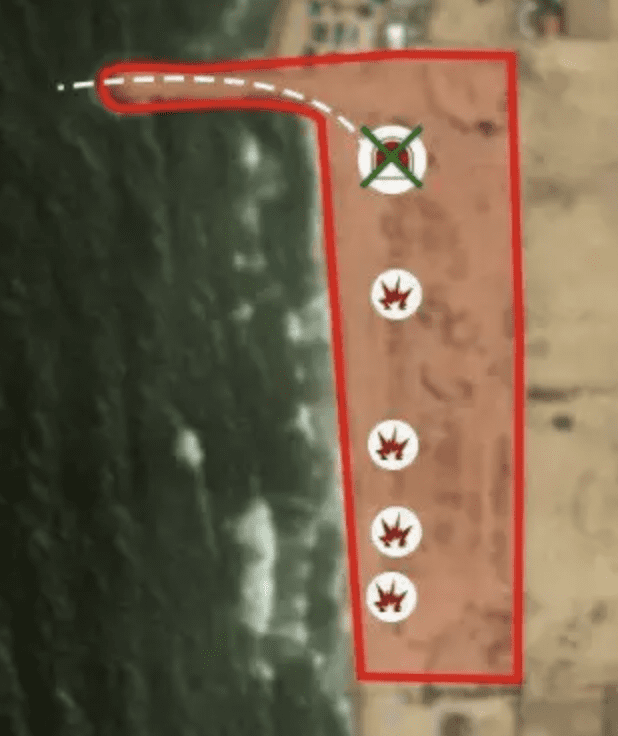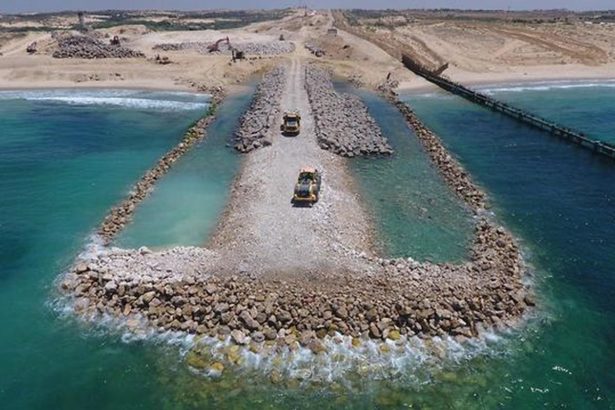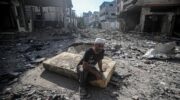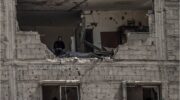Israel’s underwater barrier designed to further blockade the besieged Gaza Strip
Water and freedom are commodities that Palestinians are sorely lacking. Headlines this week indicate that their luck isn’t going to change anytime soon. Israel is building barricades in the sea, shooting at fishermen, and denying access to fresh water.
Revealed: first images of Israel’s sea barrier blockading Gaza
excerpted from MEMO – Middle East Monitor
Israel’s Ministry of Defence yesterday released the first images of its sea barrier designed to further blockade the besieged Gaza Strip. The barrier is located on Zikim beach, approximately three kilometres from Gaza’s northern frontier. The project is slated to be completed by the end of 2018 and is likely to cost an estimated 25 million shekels ($6.7 million).
When completed, the structure will stretch 200 metres out into the Mediterranean Sea, further cutting off the Gaza Strip from Israel. The barrier will consist of three layers: an underwater base level; a 50-metre-wide sea-level platform made of armoured stone, and a six-metre-high barbed wire fence. A further fence will also surround the barrier itself as “an additional security measure.”
The barrier has been praised by Defence Minister, Avigdor Liebermann. “The construction of the barrier around the Gaza Strip, both on land at sea, is progressing at a rapid and impressive pace,” said the extreme right-winger. “Every day that passes, our counterterrorism capabilities around the Gaza Strip are growing stronger.” According to Ma’an, Liebermann added that, “Hamas is losing its capability to attack Israel every day.”
[Editor’s note: Israel has only every discovered one underwater “terror tunnel,” and that was in 2018. It “was operational but did not actually extend into Israeli waters.” The IDF destroyed it in an airstrike in June. A senior officer said, “We estimate that there may be more naval tunnels,”
 According to the Jerusalem Post, “The decision to build the naval barrier was decided upon after five Hamas frogmen (naval commandos) tried to infiltrate Zikim during Operation Protective Edge in 2014 armed with automatic weapons, fragmentation grenades and several types of explosives devices. They were engaged and killed by the IDF in a combined attack from the sea, ground and air,” – although no further attacks ever took place and this single attack was neutralized easily.]
According to the Jerusalem Post, “The decision to build the naval barrier was decided upon after five Hamas frogmen (naval commandos) tried to infiltrate Zikim during Operation Protective Edge in 2014 armed with automatic weapons, fragmentation grenades and several types of explosives devices. They were engaged and killed by the IDF in a combined attack from the sea, ground and air,” – although no further attacks ever took place and this single attack was neutralized easily.]
Israeli Navy Attacks Palestinian Fishing Boats In Northern Gaza
excerpted from IMEMC
Israeli navy ships attacked, Sunday, several fishing boats in Palestinian territorial waters along the coastal line in northern and central Gaza, firing live rounds and spraying them with water cannons, forcing the fishermen back to shore.
 Under the Oslo Peace Agreement (1993), the Palestinian fishing zone was set at twenty nautical miles, but Israel regularly violates the agreement, limiting Palestinian fishing to much smaller areas. Last month, Israeli unilaterally decreased the fishing zone to the fishermen in Gaza to three nautical miles until further notice
Under the Oslo Peace Agreement (1993), the Palestinian fishing zone was set at twenty nautical miles, but Israel regularly violates the agreement, limiting Palestinian fishing to much smaller areas. Last month, Israeli unilaterally decreased the fishing zone to the fishermen in Gaza to three nautical miles until further notice
There are more than 4000 fishers and around 700 boats in the Gaza Strip providing livelihood to at least 70.000 Palestinians, while the Israeli military and navy keep attacking them, kidnapping them and confiscating their boats, in addition to the dozens of casualties, including fatalities, resulting from these violations. In February of this year, the Israeli navy killed Ismael Saleh Abu Ryala, 18, a fisherman from Gaza.
Israeli border restrictions prevent water purification for Gazans
excerpted from Jerusalem Post
Israel’s ban on Gaza goods has prevented the opening of the largest solar field in the Strip, which otherwise could have become operational this week. The new field, funded by the EU, was constructed to fuel the Southern Gaza Desalinization Plant. But due to the ban, it lacks the cables and other parts necessary to be hooked up to the electricity grid.
Johannes Hahn, EU Commissioner for European Neighborhood Policy and Enlargement Negotiations, said: “Limited energy supplies in Gaza are one of the main challenges when improving access to safe and drinkable water to the local population. The photovoltaic solar field is essential to respond to the urgent water needs in Gaza and create dignified living conditions for its people, thus mitigating tensions in a highly conflict sensitive area.”
According to the EU, 97% of the Gaza water is “unfit for human consumption.”
RELATED:
Gunfire, Bans, Ship Seizures: Israeli Army Is Destroying a Staple of Gaza’s Economy





